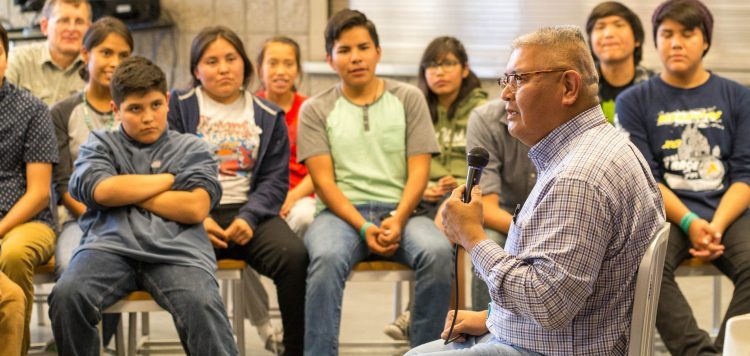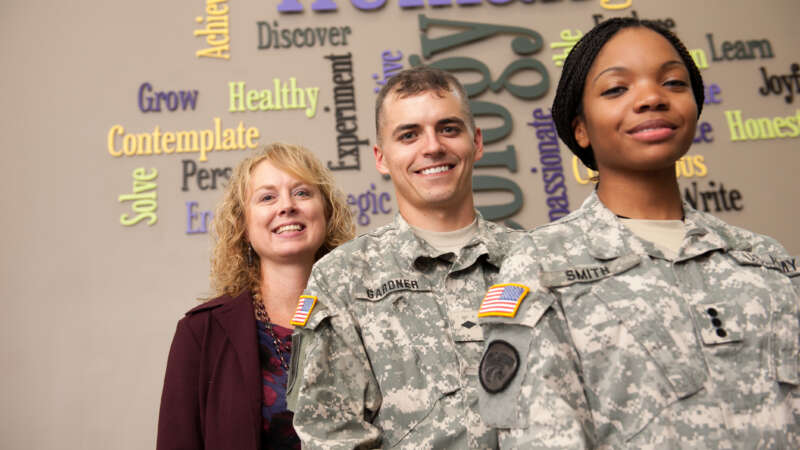K-State Gift of Life Club is allowing more students to help save lives.
Saving someone’s life can be as simple as donating blood, and a club at K-State is working to find matches for patients in need of life-saving bone marrow transplants. Often many people when they hear the words “bone marrow donation” the first thing that comes to mind is pain experienced on the behalf of the donor. The Gift of Life Club at Kansas State University is out to clear up many of the misconceptions about bone marrow donation and remind people of why they should donate: to save a life.
“A newer method of harvesting blood stem cells through a process called apheresis makes it almost as easy and painless as donating blood. Anyone could be a match for another person, and their life could potentially be in your hands,” said Luke Hesse, founder of the Gift of Life Club at K-State.
The donation process is done one of two ways, the first method is done under general anesthesia and no pain is felt during the actual procedure, however, some soreness is expected for a few days after the donation and this method is usually done in less than 30-45 minutes. The second method is much more common and less invasive and involves the collection Peripheral Blood Stem Cells (PBSC).
For both methods, for five days prior to the donation, the donor receives a series of injections for each day leading up to the donation that stimulate the production of new stem cells within the bone marrow that eventually enter circulation in the bloodstream. The process of collecting PBSC is simply a method in which blood is drawn from one arm, circulated through a machine by a process called apheresis that separates the stem cells in circulation from the rest of the blood and the remaining components of the blood are returned to the donor through the other arm. While this seems somewhat apprehensive, to put things into perspective one must think about what the patients battling blood cancer are going through—multiple doctor visits, rounds of chemotherapy and radiation.
Gift of Life Club’s mission is to educate the public about bone marrow donation and clear up misconceptions about the process. This K-State club is a subset of the parent organization Gift of Life. The mission of the club, as well as the Gift of Life parent organization, is to give a second chance at life to anyone battling a rare blood disease such as leukemia or lymphoma.
This club’s start at K-State was fulfilled by a student looking to give a little more to his community and help save a life in need: Luke Hesse. “Initially, I think that I simply wanted to get involved in something greater than myself and that could be a huge benefit to others,” said Luke.
Luke was a campus ambassador for a year before even thinking about seriously starting an organization on campus. “Once I felt comfortable talking to people about the registry, I began giving speeches at several other clubs on campus,” Luke said. “I talked with friends and found that several were supportive and willing to work together to start the organization—it truly could not have been done without everyone’s contributions and hard work to make a difference. As our network expanded, I continued my presentations and we continued running drives on campus, and the club became a part of that discussion.”
It was during one of Luke’s speeches that Jacob Christopherson, the current president of the club, first heard of the way he would be able to help others. “I first heard about Gift of Life in high school, when Luke Hesse came to present in one of my science courses my senior year. He explained the mission of Gift of Life and why it was so important for young adults to sign up for the registry,” Jacob said. “He mentioned that he attended Kansas State and I took note of that. When I came to Manhattan my freshman year, I made it a point to search out Luke and the club.”.
Jacob continues to push for more involvement from students. “On campus, we hold drives and solicit other organizations to inform as many people as possible of this lifesaving ability that many do not know is inside of them. Through a five-minute cheek swab and registration, we help put people in the position to possibly give the gift of life to those who are battling very serious diseases. The more people that join the registry, the more people who will find matches and be saved,” said Jacob.
While this club is the first of its kind at K-State, many college campuses all around the country also have clubs to expand their ability to carry out Gift of Life’s mission. When looking at who is an ideal candidate for bone marrow and PBSC donations, physicians tend to prefer donors between 18-25 years old because success rates are higher compared to other demographics, making the college club’s mission very important to the success of the organization as a whole.
While the Gift of Life club has a primary focus on recruiting college students, this is a mission to potentially find a cure for those battling blood cancer and includes the need for everyone to consider becoming a donor. “It is such a simple, yet important thing to get swabbed and join the registry—it could lead to potentially life-saving donations for someone’s child, parent or grandparent,” said Luke.
According to Gift of Life, seventy percent of patients that are diagnosed with blood cancer must rely on the international bone marrow registry for a donor that could be their only chance at life. You may be called any time between registration and your 61st birthday. The odds are variable and depend on your specific tissue type that is dependent upon factors such as race and ancestral origin. According to Gift of Life, on average, one in 200 of Gift of Life donors are called upon to donate every year, however, only one in 1000 Gift of Life donors and one in 430 of Be the Match donors actually end up going through the donation process after confirmatory typing and physical examination to assess the donor’s health. It can be very hard to find a match because you must be a perfect match to your candidate, which comes down to the proteins on the surface of your immune cells.
The Gift of Life club at K-State has added around 300 people to the registry in the past semester and a half and are hopeful that the first match and donation will come soon.
“If there was anything that I would tell people who may be hesitant about joining the registry, I would tell them it is not as scary as it seems. We tend to find that what gives a lot of potential donors pause is the fear that the process is agonizing or painful and that is simply not the case,” said Jacob.
To learn more about the Gift of Life and how you can make a difference please visit the Gift of Life website.







